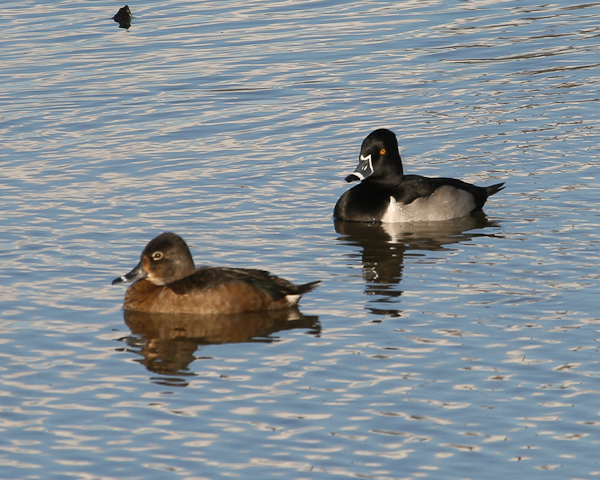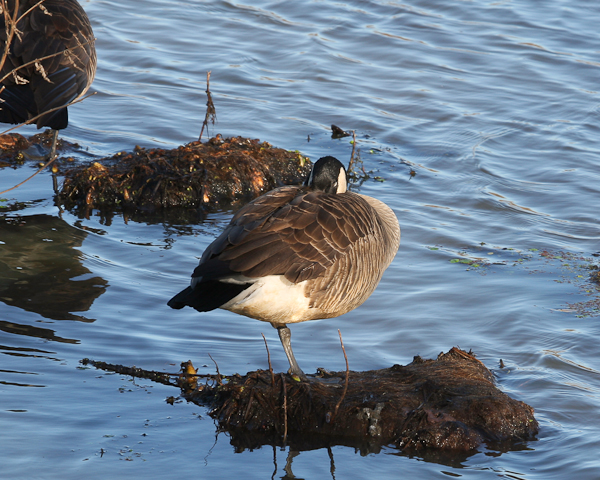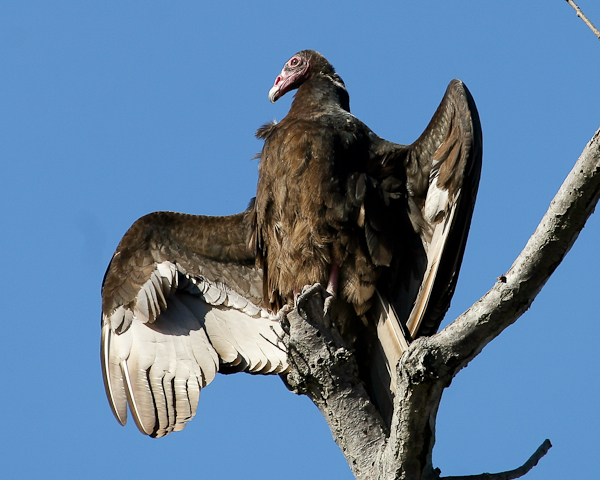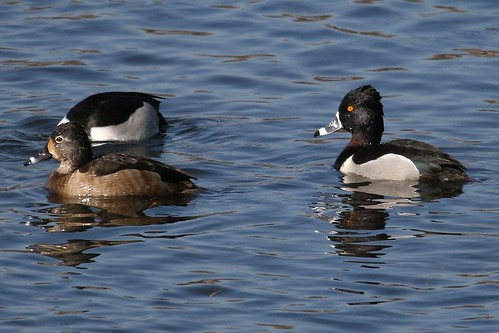Some free time and a bit of mild weather in December was all the excuse I needed to visit Dutch Gap Conservation Area (DGCA). I am certainly no stranger to DGCA - it is one of my favorite local spots. And while I might occasionally bemoan the repetition of seeing Ring-necked Ducks during the winter, deep down inside I think they are cool looking birds that I really can't resist photographing. Especially when they are at a convenient distance and in good light.
Even a Canada Goose becomes an interesting photographic subject in good light. This one is clearly demonstrating a balancing-while-napping skill that I will never have.
I was on my way out of the park when I spied this lovely Turkey Vulture taking advantage of the morning sunshine. Too good to pass up, I got out of my car and took several photos of this pose, while he watched me for any sign that I might be trouble.
Showing posts with label Ring-necked Duck. Show all posts
Showing posts with label Ring-necked Duck. Show all posts
Ring-necked Duck
Today was a beautiful day, and as I hinted in my previous post, I did make it out for some birdwatching and photography. I took a trip out to one of my favorite local birdwatching spots: Dutch Gap Conservation Area (sometimes referred to as Henricus, because DGCA is right next to the historical site). I am happy to report that, according to the birds, spring has sprung. There were plenty of just returned Tree Swallows flitting about, and I heard and saw my first of season Yellow-throated Warbler. The song of the Yellow-throated Warbler is one of the first I learned, and is one of the first I hear each spring. Whenever I hear it, I think spring and migration.
So, why is this post called "Ring-necked Duck"? I am usually a bit (and sometimes a lot) behind in the steps I follow to cull out what I consider decent photos. Add to that my usual two-posts-a-week blogging pace, and I am typically posting photos that I took a few weeks ago. Today is no exception. Today I am sharing a photo of a Ring-necked Duck that I took on a different visit to DGCA. I did not take this photo today, but back in February when it was colder and there were still lots of ducks bobbing about the marsh, waiting for their cue to head north. I was lucky to have great light, and my photo shows the chestnut colored ring (on the male) from which this species gets its name.
So, why is this post called "Ring-necked Duck"? I am usually a bit (and sometimes a lot) behind in the steps I follow to cull out what I consider decent photos. Add to that my usual two-posts-a-week blogging pace, and I am typically posting photos that I took a few weeks ago. Today is no exception. Today I am sharing a photo of a Ring-necked Duck that I took on a different visit to DGCA. I did not take this photo today, but back in February when it was colder and there were still lots of ducks bobbing about the marsh, waiting for their cue to head north. I was lucky to have great light, and my photo shows the chestnut colored ring (on the male) from which this species gets its name.
DGCA in Winter - Ducks
I had today off from work (Martin Luther King Day), so I took advantage of the day by making a trip to Dutch Gap Conservation Area (DGCA) to see what birds are wintering there. It was cloudy and looked like it could rain, but it stayed dry and relatively warm for January. It was also fairly windy.
The usual wintering birds include a good variety of ducks. I had my camera with me so I managed to get a few fuzzy pictures.
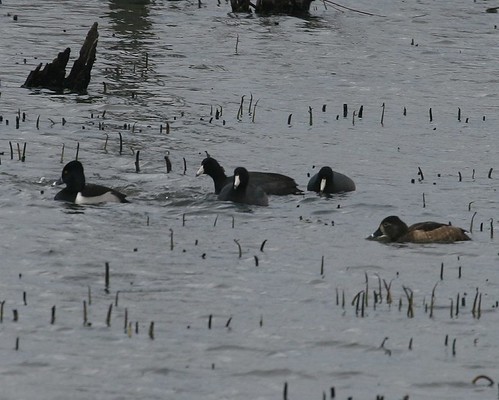
The first picture has both Ring-necked Ducks (a male on the left and a female on the right) and American Coots (the three in the center). The water appears to be churning because they are continuously diving for food as I am taking pictures of them. The Coots are actually more closely related to Rails, but they act like Ducks.

The second picture is of Northern Shovelers (with the big flat bills) and Gadwall (the gray bodied duck with a brownish cap on its head in the back left portion of the picture is a male, the brownish bird in the center back is the female). These ducks are "dabblers", meaning that they generally tip their head under water to feed, but usually do not dive under water to feed.
The usual wintering birds include a good variety of ducks. I had my camera with me so I managed to get a few fuzzy pictures.

The first picture has both Ring-necked Ducks (a male on the left and a female on the right) and American Coots (the three in the center). The water appears to be churning because they are continuously diving for food as I am taking pictures of them. The Coots are actually more closely related to Rails, but they act like Ducks.

The second picture is of Northern Shovelers (with the big flat bills) and Gadwall (the gray bodied duck with a brownish cap on its head in the back left portion of the picture is a male, the brownish bird in the center back is the female). These ducks are "dabblers", meaning that they generally tip their head under water to feed, but usually do not dive under water to feed.
Subscribe to:
Posts (Atom)

